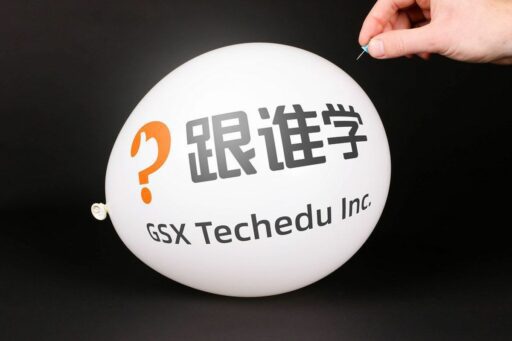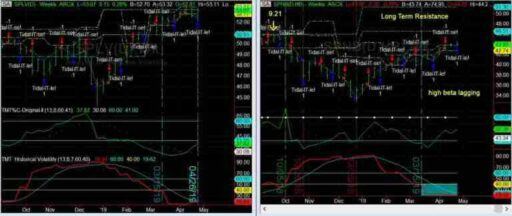The article ‘Exploring the Volatility: An Analysis of GME Stock Price Dynamics’ delves into the complex financial journey of GameStop’s stock (GME), focusing on its remarkable market behavior and the implications for investors. From the extraordinary short squeeze of 2021 to the subsequent technical and fundamental analyses, we uncover the factors driving GME’s price movements and what they signal about the stock’s future. We also contextualize GME within the broader market, examining its correlation with sector trends and index performances, and conclude with expert insights into its potential trajectory.
Key Takeaways
- GameStop’s stock (GME) became the epicenter of a historic short squeeze in 2021, which was influenced by a combination of retail investor activism and financial institutions’ positions.
- Technical analysis reveals that GME’s stock price has exhibited significant volatility, with chart patterns and trading volumes providing insight into investor sentiment and market dynamics.
- Fundamental analysis indicates that GameStop’s financial health has been a point of concern, with its PE ratio and earnings per share reflecting underlying challenges.
- GME’s performance in the stock market must be viewed in relation to the retail and consumer electronics sectors, as well as its weight in major indices and ETF holdings.
- Future outlooks for GME are mixed, with some analysts issuing weak sell opinions, while the stock’s resilience and the role of media and analyst recommendations continue to influence its valuation.
The GameStop Phenomenon: Understanding the 2021 Short Squeeze


The Mechanics of the Short Squeeze
A short squeeze is a powerful market force that can lead to dramatic increases in a stock’s price. Short sellers are compelled to buy back shares to close their positions, often at much higher prices, which can amplify the stock’s ascent. This phenomenon was notably observed during the GameStop saga, where a concerted effort by retail investors to buy and hold GME shares precipitated a massive short squeeze.
The mechanics of a short squeeze involve several key factors:
- High short interest: A large percentage of a stock’s available shares are sold short.
- Limited float: A small number of shares available for trading, making it difficult for short sellers to cover their positions without driving up the price.
- Catalyst events: Positive news or significant developments that prompt a rush to buy shares.
The interplay between these elements can create a feedback loop, where rising prices force more short sellers to cover, further driving up the price.
Understanding these dynamics is crucial for investors and traders, as they can lead to rapid and unpredictable market movements. The GameStop short squeeze serves as a case study in the potential volatility and power of collective investor action.
Market Impact and Investor Response
The unprecedented surge in GameStop’s stock price not only shook the financial markets but also highlighted the growing influence of retail investors. The WSB community’s role was undeniable, as they orchestrated a buying frenzy that countered the heavy short positions held by institutional investors. This tug-of-war resulted in a dramatic increase in GME’s stock value, which became a spectacle for the world to witness.
Following the squeeze, the investor response was a mix of astonishment and opportunism. Many jumped on the bandwagon, hoping to capitalize on the volatility, while others took a more cautious approach, wary of the potential for significant losses.
The market’s reaction to the GameStop saga was a clear indication of the shifting dynamics between retail and institutional investors.
Here is a snapshot of GME’s stock performance during the peak of the short squeeze:
| Date | Opening Price | Closing Price | Volume |
|---|---|---|---|
| Jan 11 | $19.41 | $19.94 | 14,717,800 |
| Jan 22 | $42.59 | $65.01 | 196,454,000 |
| Jan 28 | $265.00 | $193.60 | 197,157,900 |
The table above illustrates the rapid escalation in price and trading volume, underscoring the volatility and the high-stakes environment that was created.
Legacy and Influence on Retail Investing
The GameStop stock saga began as a speculative investment by retail investors who believed the stock was undervalued. Encouraged by discussions on forums like Reddit’s r/wallstreetbets, these investors initiated a buying frenzy that led to a historic short squeeze. This event not only impacted GameStop’s valuation but also highlighted the collective power of retail investors when mobilized through social media platforms.
The legacy of GameStop’s stock movement is multifaceted. It has prompted a reevaluation of market practices, particularly around short selling and market manipulation. Moreover, it has inspired a wave of new retail investors, eager to participate in the stock market with the hope of replicating such extraordinary gains. Below is a list of key influences GameStop’s episode has had on retail investing:
- Increased scrutiny and regulatory interest in market manipulation and short selling practices.
- A surge in the use of trading apps and platforms by retail investors.
- Greater awareness of the impact of social media on stock market dynamics.
- The rise of ‘meme stocks’ as a new category of speculative investment.
The GameStop phenomenon has undeniably altered the landscape of retail investing, democratizing access to the stock market and showcasing the potential influence of coordinated retail investor action.
Technical Analysis of GME Stock Movements


Price Trends and Chart Patterns
The recent weeks have seen a notable fluctuation in the price of GameStop Corp (GME) stock. The patterns emerging from the candlestick charts suggest a battleground between bullish and bearish sentiments. This volatility is not just a trader’s concern but also a point of analysis for investors trying to gauge the stock’s future trajectory.
The table below summarizes the price performance over various periods:
| Period | Period Low | Period High | Performance |
|---|---|---|---|
| 1-Month | 13.12 | 15.89 | +4.94% |
| 3-Month | 13.12 | 18.59 | -10.90% |
| 52-Week | 11.82 | 27.65 | -11.22% |
While the short-term performance shows some recovery, the longer-term view reflects a significant drop from the 52-week high.
Understanding these trends requires not just looking at the numbers but also interpreting the chart patterns and volume movements. The candlestick patterns, as reported by sources like Investing.com, provide insights into investor behavior and market sentiment.
Volume Analysis and Trading Activity
The trading volume of GameStop (GME) provides critical insights into the stock’s liquidity and investor interest over time. Volume is a key indicator of market activity and sentiment, often preceding price movements. A surge in trading volume can signal an upcoming price change, whether due to news releases, earnings reports, or shifts in investor sentiment.
Key trading volume statistics for GME include the total number of shares traded during a session and the average volume over a 20-day period. These figures help investors gauge the stock’s typical activity levels and detect any unusual patterns. For instance, a significant deviation from the average volume may indicate heightened interest or disengagement among traders.
| Metric | Description |
|---|---|
| Day High / Low | Highest and lowest trade price for the session |
| Open | Opening price for the session |
| Previous Close | Last closing price |
| Bid/Ask | Last bid and ask prices and sizes |
| Volume | Total shares traded in the session |
| Average Volume | Average shares traded over the last 20 days |
The analysis of volume trends alongside price action can reveal the strength of a price move and potential investor conviction.
Understanding the nuances of volume analysis, such as the implications of unusual options activity or the significance of volume leaders, is essential for investors looking to make informed decisions based on GME’s market behavior.
Barchart Technical Opinion Overview
The Barchart Technical Opinion offers a comprehensive analysis of GME’s stock performance using a variety of analytics. This tool provides insights into the short-, medium-, and long-term trends of the stock, summarized into actionable signals. The current opinion is a reflection of the stock’s recent movements and predictive analytics.
According to the latest data, the Barchart Technical Opinion rating for GME is leaning towards a bearish sentiment. The widget indicates a 24% Sell signal, suggesting a weaker confidence in the stock’s ability to maintain its current direction in the short term. Investors may consider this information when evaluating their positions.
The Barchart Technical Opinion is just one of many tools investors can use to gauge market sentiment and make informed decisions. While it provides a snapshot of the stock’s performance, it should be used in conjunction with other analyses and market indicators.
Fundamental Analysis: Assessing GameStop’s Financial Health


Earnings Reports and Revenue Streams
GameStop’s financial health can be significantly gauged by analyzing its earnings reports and revenue streams. Quarterly revenue growth and earnings per share (EPS) are critical indicators of the company’s operational performance and profitability.
| Metric | Value |
|---|---|
| Earnings Share (EPS) | 2.689 |
| Revenue Per Share | 18.719 |
| Quarterly Revenue Growth | (0.09) |
| Return On Assets | (0.01) |
Despite the challenges faced in recent quarters, GameStop has shown resilience in its revenue per share. However, the negative quarterly revenue growth and return on assets highlight areas that require strategic attention.
The focus on digital transformation and expansion into new markets is expected to play a pivotal role in shaping GameStop’s future revenue streams.
PE Ratio and Market Capitalization
GameStop’s market capitalization reflects the total market value of its outstanding shares. As of the latest data, the company’s market cap stands at approximately $4.5 billion, with around 305.5 million shares outstanding. The PE Ratio, a key indicator of a stock’s valuation, is not applicable for GameStop due to its negative earnings.
| Metric | Value |
|---|---|
| Market Capitalization | $4,497,166K |
| Shares Outstanding | 305,514K |
| Annual Sales | $5,927M |
| Annual Income | -$313,100K |
| Price/Sales Ratio | 0.79 |
| Price/Book Ratio | 3.54 |
The Price to Book (P/B) ratio, which compares the market’s valuation of the company to its book value, stands at 3.54. This suggests that the market values the company at over three times its book value, indicating investor confidence or speculative interest.
The absence of a PE Ratio due to negative earnings highlights the challenges GameStop faces. Despite this, the company’s market capitalization and Price/Sales Ratio suggest that investors are still willing to invest in the potential turnaround of the company’s fortunes.
Dividend History and Stock Performance
GameStop Corp. has had a notable history with dividends, reflecting its financial health and commitment to shareholder returns. The annual dividend yield, a critical measure for income-focused investors, has seen fluctuations over the years.
In the last twelve months, GameStop Corp. granted a dividend yield of 0.00%, with an annual payout of $0.00 per share. This indicates a pause in the company’s dividend distribution, which can be attributed to various strategic decisions or shifts in financial priorities.
| Year | Dividend Yield | Annual Payout per Share |
|---|---|---|
| 2020 | 4.2E-5 | Not Disclosed |
| 2021 | 0.00% | $0.00 |
| 2022 | 0.00% | $0.00 |
| 2023 | 0.0335 | Not Disclosed |
| 2024 (projected) | 0.0456 | Not Disclosed |
While the dividend yield is currently non-existent, the projected increase for the upcoming years suggests a potential resurgence in GameStop’s dividend policy, which could be a positive signal for investors.
The stock’s performance is also closely tied to its dividend history. Investors often view dividends as a sign of a company’s stability and profitability, and changes in dividend policies can lead to significant shifts in stock valuation.
GME in the Broader Market Context
Comparison with Retail and Consumer Electronics Sectors
When placed alongside its peers in the retail and consumer electronics sectors, GameStop’s market performance offers a unique perspective. The company’s sector classification under SIC-5734 highlights its niche in computer and computer software stores, which is a subset of the broader consumer electronics category.
GameStop’s position within major indices such as the S&P 400, Russell 1000, and Russell 3000 provides a benchmark for comparing its stock performance. Here’s a quick look at how GME’s stock has fared in comparison to other specialty retail stocks and its representation in ETFs:
| Symbol | % Holdings | 3M % Change |
|---|---|---|
| GME | -10.90% | Gamestop Corp |
| ESPO | 1.95% | +13.35% |
| ODDS | 1.28% | +11.53% |
| XRT | 1.18% | +8.85% |
| SFYF | 0.8% | +11.26% |
While the table reflects a negative three-month percentage change for GME, it’s important to consider the volatility and the unique market dynamics that have characterized GameStop’s stock in recent times.
The comparison with other stocks in the sector such as AMC, GS, BAC, and MSFT, shows that GME’s movements are not always in lockstep with industry trends. This divergence can be attributed to the specific market forces and investor sentiments that drive GameStop’s stock.
GameStop’s Position in Major Indices
GameStop’s inclusion in major indices reflects its market influence and investor interest. While not a heavyweight in the larger indices, GME’s presence is notable in sector-specific ETFs. GameStop’s stock climbs more than 5%, resuming its rally, indicating the dynamic nature of its market valuation and the attention it garners from both retail and institutional investors.
The company’s stock is a component of several ETFs that track the performance of the retail sector and the broader video gaming and esports market. Here’s a snapshot of GameStop’s weightage in various ETFs:
| ETF Symbol | % Holdings | 3M % Change |
|---|---|---|
| ESPO | 1.95% | +13.35% |
| ODDS | 1.28% | +11.53% |
| XRT | 1.18% | +8.85% |
| SFYF | 0.8% | +11.26% |
| BNGE | 0.6% | +8.89% |
Despite recent market fluctuations, GameStop’s strategic position within these ETFs suggests a sustained interest in its stock, potentially offering stability amidst volatility.
ETF Holdings and GME’s Weightage
GameStop’s presence in exchange-traded funds (ETFs) provides insight into its market weightage and investor sentiment. The stock’s fluctuating positions in various ETFs reflect its dynamic role in the market. For instance, GME’s weightage in the VanEck Video Gaming and Esports ETF (ESPO) stands at 1.95%, indicating a significant stake in the gaming and esports sector.
Here’s a snapshot of GME’s representation in select ETFs:
| Symbol | % Holdings | 3M % Change |
|---|---|---|
| IJH | 0.15% | +9.50% |
| VB | 0.07% | +7.66% |
| VBR | 0.13% | +6.14% |
| MDY | 0.14% | +9.38% |
| VTI | 0.01% | +9.38% |
| ESPO | 1.95% | +13.35% |
| ODDS | 1.28% | +11.53% |
| XRT | 1.18% | +8.85% |
While GME’s negative price change over the past three months stands out, its inclusion in ETFs like ESPO and ODDS suggests a targeted interest in the gaming industry. The stock’s performance within these funds can serve as a barometer for its sector-specific appeal.
The table above provides a concise view of how GME’s stock is distributed among ETFs, which can be a useful tool for investors to gauge the stock’s broader market influence.
Future Outlook and Expert Predictions for GME
Analyst Ratings and Stock Predictions
The future of GameStop Corp (GME) continues to be a subject of intense speculation among analysts and investors alike. Based on current analyst ratings, GME holds a Moderate Sell position, reflecting the cautious stance of market experts. The earnings estimates for the upcoming quarter ending on 01/31/24 suggest an average estimate of $0.25 per share, indicating a significant year-over-year growth rate of +56.25%.
The options market hints at a volatile path ahead for GME, with an expected average daily price movement of about 6.85%.
The implied volatility stands at 134.55%, with a historical volatility of 44.99%, showcasing the stock’s unpredictable nature. The Put/Call Volume Ratio and Open Interest figures further underscore the heightened activity surrounding GME options.
| Metric | Value |
|---|---|
| Implied Volatility | 134.55% |
| Historical Volatility | 44.99% |
| IV Percentile | 98% |
| Put/Call Vol Ratio | 0.19 |
| Today’s Volume | 46,974 |
| Open Interest | 383,312 |
While the data presents a mixed outlook, investors are advised to keep a close watch on the evolving market sentiment and position their portfolios accordingly.
Potential Risks and Growth Opportunities
GameStop’s journey through the market has been anything but ordinary. As investors consider the bearish case against GameStop, it’s important to weigh the potential risks alongside the growth opportunities. Lack of revenue growth remains a concern, as highlighted by market analysts. This, coupled with the inherent volatility of meme stocks, presents a significant challenge for long-term investment strategies.
- Risks: Volatility, EPU (Economic Policy Uncertainty), GPR (Geopolitical Risks)
- Growth Opportunities: Diversification, Technological Advancements, Strategic Partnerships
While the allure of quick gains can be tempting, it’s essential to approach GameStop with a balanced perspective, considering both the potential for high rewards and the risk of substantial losses.
Investing in GameStop, like any stock, carries the risk of loss. The value of investments can fluctuate, and past performance is not a reliable indicator of future results. Regulatory considerations and external shocks to financial markets also play a crucial role in shaping the dynamic patterns of meme stocks like GME.
The Role of Media and Analyst Recommendations
The influence of media coverage and analyst recommendations on GME stock cannot be overstated. Media narratives and analyst reports often sway investor sentiment, potentially leading to significant price movements. While some analysts provide a long-term outlook based on fundamental analysis, others focus on short-term trading signals and sentiment indicators.
- Research Analyst opinions are their independent views, distinct from Desk Analysts.
- Earnings estimates and financial summaries are frequently scrutinized.
- Media sentiment and related social signals are monitored for investment opportunities.
The interplay between media hype and analyst ratings can create a feedback loop, amplifying the stock’s volatility.
The summary table below encapsulates key lagging indicators that may influence GME’s reaction to market hype:
| Indicator | Relevance to GME |
|---|---|
| Earnings Estimates | High |
| Analyst Ratings | Moderate to High |
| Media Sentiment | High |
| Social Signals | Moderate |
Understanding these dynamics is crucial for investors aiming to navigate the tumultuous waters of GME’s stock price fluctuations.
Conclusion
The journey of GameStop’s stock (GME) has been a rollercoaster of volatility, marked by unprecedented events and speculative fervor. From the short squeeze saga that catapulted its value from $17 to $500, to the more recent fluctuations influenced by technical analyses and market sentiment, GME has become emblematic of the power of retail investors and the unpredictability of meme stocks. Despite the challenges and the weak sell signals from technical opinions, the resilience shown by GME—both in the stock and the unrelated meme coin—highlights a new era of investor dynamics and market phenomena. As we continue to witness the evolution of GME’s stock price dynamics, it serves as a reminder of the intricate interplay between social movements, market forces, and digital assets in the modern financial landscape.
Frequently Asked Questions
What was the GameStop short squeeze of 2021?
The GameStop short squeeze in January 2021 occurred when a large group of retail investors and online traders banded together to buy shares and call options of GameStop (GME), driving up the stock price and causing significant losses for short sellers who had bet against the company.
How has GME stock performed since the 2021 short squeeze?
Since the 2021 short squeeze, GME stock has experienced significant volatility, with prices fluctuating based on various factors including market sentiment, trading volume, and company performance.
What is the current financial health of GameStop?
As of the latest reports, GameStop’s financial health is mixed, with a market cap of approximately $4.54B, a P/E ratio that has been negative, and fluctuating earnings. The company has not issued dividends since March 2019.
How does GME compare to other stocks in the retail and consumer electronics sectors?
GME is often compared to other stocks in the retail and consumer electronics sectors. Its performance and market position can vary based on sector trends, consumer demand, and competitive factors.
What are expert predictions for the future of GME stock?
Expert predictions for GME stock are diverse, with some analysts offering cautious or negative outlooks, citing weak fundamentals, while others focus on potential growth opportunities and the company’s efforts to reinvent itself.
What is the relationship between GME stock and the GME meme coin?
The GME meme coin is a cryptocurrency that was inspired by the resilience of GameStop stock during the 2021 short squeeze. Although they share the same ticker, GME, they are not directly related and operate in different markets.





